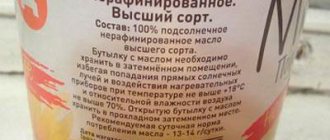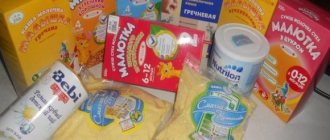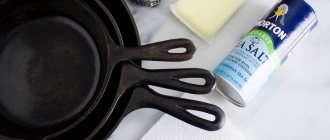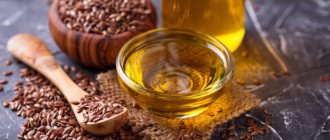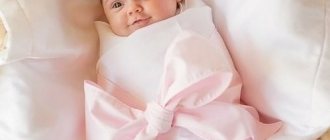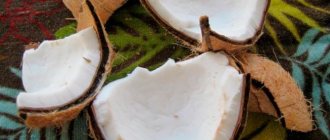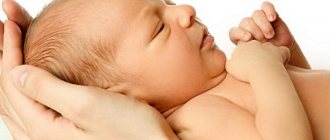Delicate baby skin needs special and regular care. To prevent diaper rash and dryness, oil for newborns is produced. It has found its application not only in the process of infant massage, it can be used to lubricate the folds on the child’s body and to treat the nose. In some cases, it is permissible for them to replace the creams and powders that are used under the diaper.
Weleda for infant tummy massage
Purposes of application
Baby oils are universal:
- clean the nose and ears;
- remove crusts on the head;
- prevent and treat diaper rash after wearing diapers and in skin folds, relieve dry skin;
- facilitate massage.
Massage
Massage is a beneficial procedure for newborns. The mother establishes contact with the baby, at the same time the baby’s body relaxes and increased muscle tone disappears.
Baby massage
The most popular special means for these purposes are:
- "Eared Nanny";
- "Tender mother";
- "The world of childhood".
It is also permissible to apply Vaseline, peach or olive oil to the baby’s skin. These are products of natural origin that are well absorbed and moisturize the skin.
After swimming
After bathing, baby oil, cream, powder, lotion or milk are applied to the skin.
Comparison of the effects of products used after bathing
| Means | Action |
| Talc, powder | Prevention of heat rash and diaper rash. The skin becomes silky. First, talc is poured onto the palm of the parents, then the baby’s skin is treated with it. |
| Milk, lotion | Helps with flaking (especially on the palms and soles) and dry skin. The milk simultaneously moisturizes the skin and prevents moisture loss. |
| Baby cream | Excellent prevention against diaper rash. Creams with string and chamomile extracts perfectly soothe the skin. |
| Spray with panthenol | Helps in the fight against diaper rash and dry skin. |
| Oil | It is recommended to apply only when the skin is extremely dry. |
For dry skin
Baby bathing oil for dry skin helps restore the skin, saturates the skin with vitamins E and D, soothes and heals damaged skin. It should be applied immediately after bathing. Dry skin can be caused by improper care of your baby.
Rules:
- Do not bathe a newborn for more than 7-8 minutes;
- Do not wear one diaper for more than three hours, change immediately after defecation. Carry out air baths;
- Do not tear off the scabs on the baby's head under any circumstances - this will cause injury to the skin and increase the risk of infection.
Processing folds
Baby oil is an excellent product to soften the skin. It is very soft in the fold area. Treatment of folds is required every day.
For what purposes is the procedure carried out:
- prevent the appearance of diaper rash;
- to prevent skin from drying out;
- to clean hard-to-reach places from dirt and sweat;
- You can track the onset of an allergic reaction in time.
Oil is best suited for this procedure because it covers the skin with a film that protects it from the penetration of pathogenic microbes. The folds should be blotted carefully, without rubbing, so as not to cause irritation. At the end of the procedure, excess is removed with a napkin or cotton pad. Then the child is dressed in clean clothes, or the baby can be swaddled and put to rest.
Difference between butter and milk
Parents are also interested in the difference between butter and milk. What is best to use for newborns? The main difference is the consistency. The milk applied to the skin is absorbed instantly. It is advisable to use it for cleansing. This is a replacement for soap. This product maintains water-fat balance well.
The task of oil is somewhat different. It protects the skin from minor mechanical damage. For example, when rubbing against a diaper, clothing, diaper. The oil also preserves the elasticity of the epidermis and eliminates the problem of dryness. It is difficult to answer unequivocally which is better. It cannot be said that you cannot do without one remedy, and the other is not worth attention. A reasonable solution is a compromise. You can alternate the use of oil and milk without fear that it will somehow harm the baby.
Properties
Fontana in newborns
Scientists have studied various types of oils for baby skin care. Research has shown the healing properties of natural remedies:
- these are excellent antiseptics;
- regenerating function;
- moisturize;
- relieve irritation, itching and peeling.
Note! Baby oils are not used in the bath.
You can take essential oils with a bright, rich aroma with you to the steam room.
Why use baby oil
Oil for children is a mandatory cosmetic product from the first days of life. It perfectly moisturizes the skin of the face and body. If a child's skin is prone to irritation, it is recommended to choose oil with chamomile extract, and if it is dry, it is best to use aloe extract. Baby oil is used in several ways. The first option is for bathing: add a few drops of oil to a bath of warm water and bathe the baby in it. Thanks to this procedure, his skin will be perfectly lubricated and will retain moisture longer. The second method is to apply the oil directly to the body, both wet and dry. The product should be used once a day, during or after bathing.
Rating of the best funds
Soup for an 8 month old baby - recipes for every day
Which oil is best for newborns is not an easy question. Today the cosmetology industry is quite developed. Popular oils with medicinal properties are:
- olive;
- Vaseline;
- sunflower;
- St. John's wort;
- calendula;
- sea buckthorn;
- nutty;
- cocoa;
- coconut
Important! Before use, an allergy test must be performed. In case of redness of the skin, you should choose another product.
Rating of the best oils for babies among famous brands:
- "Bübchen" from a German company.
One of the best remedies is Bübchen.
- "Bebble" from Bulgaria.
- "Johnson's Baby", America.
- Weleda, Switzerland.
- "Chicco", Italy.
Composition of infant formula
It is important to understand that baby food is subject to mandatory certification. This means that the state monitors the quality of the product and guarantees that it is safe for newborns. Why is not every formula suitable for every child? It's all about some ingredients and their quality. Let's figure it out.
All products consist of proteins, fats, carbohydrates, vitamins and microelements.
The amount of protein in baby food is an indicator that depends on the type of formula and age stage. There is no need to control it. But you can pay attention to the ratio of whey protein and casein. All manufacturers strive to bring the composition of baby food closer to the composition of mother's milk. Therefore, the ratio of proteins most often corresponds to their ratio in a woman’s mature milk - 60 to 40. The situation with fats and carbohydrates is a little more complicated.
There are three types of carbohydrates: sugars, starch and fiber (prebiotic). The main carbohydrate for babies under one year of age is milk sugar - lactose. In specialized mixtures, lactose can be replaced with other sugar. Babies begin to receive starch later - with the introduction of complementary foods with cereals. And a prebiotic is sometimes added to the mixture. These are dietary fibers that are not digested and provide a breeding ground for beneficial bacteria. Therefore, mixtures enriched with prebiotics help normalize digestion in the intestines.
Babies need different types of fats to develop - saturated and unsaturated, which are found in breast milk. Neither animal nor vegetable fats can independently reproduce this composition. Therefore, they are combined in infant formulas. Often, as a plant component, there is palm oil, which in its pure form is poorly absorbed by the child’s body. This is where the opinion about its dangers came from. However, it is important to know that there is a fraction of palm oil that is easily digestible. It's called palm olein. It is worth paying attention to the form in which palm oil is included in baby food.
Vitamins and microelements in baby food are how different brands differ from each other. Below are the recommended nutrient intake standards in the Russian Federation. You can evaluate the selected diet for compliance with the recommendations of the Ministry of Health.
| Substance | Physiological need per day | A comment |
| Energy | 110-115 kcal/kg body weight | for children under 1 year |
| Squirrels | 2.2-2.9 g/kg body weight | for children under 1 year |
| Fats | 5.5-6.5 g/kg body weight | for children under 1 year |
| Carbohydrates | 13 g/kg body weight | for children under 1 year |
| Cholesterol | no more than 300 mg | for children |
| Vitamin C | from 30 to 90 mg | for children |
| Vitamin B1 (thiamine) | from 0.3 to 1.5 mg | for children |
| Vitamin B2 (riboflavin) | from 0.4 to 1.8 mg | for children |
| Vitamin B6 (pyridoxine) | from 0.4 to 2.0 mg | for children |
| Niacin | from 5 to 20 mg | for children |
| Vitamin B12 | from 0.3 to 3.0 mcg | for children |
| Pantothenic acid | from 1.0 to 5.0 mg | for children |
| Biotin | from 10 to 50 mcg | for children |
| Vitamin A | from 400 to 1000 mcgret. eq. | for children |
| Vitamin E | from 3 to 15 mg current equivalent. | for children |
| Vitamin D | 10 mcg | for children |
| Vitamin K | from 30 to 120 mcg | for children |
| Calcium | from 400 to 1200 mg | for children |
| Phosphorus | from 300 to 1200 mg | for children |
| Magnesium | from 55 to 400 mg | for children |
| Potassium | from 400 to 2500 mg | for children |
| Sodium | from 200 to 1300 mg | for children |
| Chlorine | from 300 to 2300 mg | for children |
| Iron | from 4 to 18 mg | for children |
| Zinc | from 3 to 12 mg | for children |
| Iodine | from 60 to 150 mcg | for children |
| Copper | from 0.5 to 1.0 mg | for children |
| Selenium | from 10 to 50 mcg | for children |
| Fluorine | from 1.0 to 4.0 mg | for children |
Source: Methodological recommendations. 2.3.1.2432-08 “Norms of physiological needs for energy and nutrients for various groups of the population of the Russian Federation” dated December 11, 2008.
Purpose of sterilization
Knitted hat for newborn boys and girls
Oils may contain harmful microorganisms. Since the immunity of infants is just beginning to strengthen and increase, mothers need to know about the sterility of plant materials and avoid infection of the skin.
You can make your own skin care product. You should take virgin vegetable oil. It must be sterilized in a water bath.
Step-by-step instruction:
- Fill the pan with water and put on fire;
- Oil is poured into a glass bottle, it is placed in water, which covers the bottle almost to the very top;
- After the water boils, let stand for 7 minutes;
- Allow the sterilized product to cool and can be used for its intended purpose.
Washing
Every time before changing a diaper after removing feces or urine, as well as before bathing the baby, you need to thoroughly wash the baby under running water at a temperature of 37-38 ° C, from front to back, protecting the genitals from contact with feces. For washing, running water at a temperature of +37-38°C is optimal; straight from the tap is quite acceptable. Use only special hygiene products. If necessary, you can use “Baby” soap, but it should be washed off thoroughly. After the procedure, dry the skin with a towel; Let the baby be without a diaper for some time so that the skin can “breathe.”
Bathing is an important daily hygiene procedure, which also has a positive effect on the child’s emotions, increases appetite, improves blood circulation and breathing. General baths for a newborn baby are recommended after the umbilical remnant falls off. Until this time, hygiene is maintained by treating the baby’s skin with a sterile cotton swab moistened with warm water. For bathing, you will need a bathtub purchased specifically for your child. It is prohibited to use it for other purposes. When bathing, the water should be 36.5-37°C; the bath should be filled enough to completely cover the newborn’s body. The air temperature in the bathing room is 22-24°C.
Bathe a healthy newborn every day at a certain time, preferably before the last feeding. Until the umbilical wound heals, bathe in boiled water; immediately after bathing, be sure to treat the umbilical wound. When giving general baths to children in the first half of life, the water temperature should be +36.5-37.0°C, and for babies aged 6 to 12 months – 36-36.5°C. The air temperature in the bathing room is 22-24°C.
- To measure the water temperature, you should use a special water thermometer. However, before immersing your child in the bath, take the time to additionally check the temperature of the water by dipping your elbow into it (the thermometer may break).
Bathing time is no more than 5-10 minutes, since the water in the bath cools quickly. The face and head are washed last. Use bathing products no more than 2 times a week; the rest of the time, bathe your baby in clean water. More frequent use of soap, shampoos and other detergents not intended for daily care leads to drying of the child’s skin and disrupts its protective function.
- Bathing in herbs should only be recommended by a doctor.
A baby up to six months of age is washed by hand without using washcloths or other means.
For bathing and cleansing the skin of a newborn and young child, use water and special baby detergents that are free of alkaline components (pH-neutral) and do not destroy the natural hydrolipidic film of the skin.
Currently, to care for the baby’s delicate skin, as well as to prevent its damage, there are specialized cosmetic care products - EMOLENTS. Emollients do not contain artificial additives and are therefore hypoallergenic; due to the natural components in their composition, they help maintain skin hydration, saturate it with fats, eliminate irritation and restore the hydrolipidic layer of the epidermis. With long-term use, emollients create an additional protective barrier for the skin. Modern emollient cosmetics “ Sensaderm ” (creamy wash gel, emulsion and body cream) are designed for skin care, starting from the birth of the baby.
For daily cleansing of the skin, instead of soap and shampoos, you can use the hypoallergenic creamy washing gel “S ensaderm ” , containing natural vegetable oils (shea butter, macadamia, etc.), panthenol, sodium hyaluronate, arginine, allantoin.
S ensaderm is a creamy wash gel designed for skin care for children and newborns. Thanks to a specially selected formula Sensaderm gently cleanses the skin without destroying the natural hydrolipidic film of the skin, preserving its natural protection. Gently cleanses, softens, soothes irritated, hypersensitive skin. Has additional moisturizing properties and does not cause dry skin. Method of use : apply a small amount of gel on your palms, and then onto the baby’s damp skin with massage movements, do not rub. Then rinse with water.
After bathing, thoroughly dry the baby’s skin with a warm, soft diaper or towel (get wet, not wipe!), which must be pre-warmed for a baby in the first year of life. Don't forget about skin folds, palms, and feet. Then the baby's skin should be treated using various care products.
Application technique
If the product is used for body massage, then it should be applied carefully, after warming it in your hands. You should focus on the baby’s reaction. If the massage is carried out correctly, his body will relax, and the baby may even fall asleep.
Apply the product with light gentle strokes
It is necessary to carefully go through all the folds on the body, gently rubbing the oil into the skin. The product should be absorbed into the skin for some time, but the baby should not freeze. After the massage, the child should be dressed in warm, comfortable clothes. If the product is used to cleanse the nose and ears, then a cotton pad is dipped into the oil, after which the procedure itself is carried out.
Oil or cream?
Many parents wonder if it is possible to replace butter with cream. Both products are needed in the arsenal of children's cosmetics. And each of them has its own application. For example, cream is more used topically. As a rule, it is used to treat specific areas rather than applied to the entire body. Oil is a universal remedy that can help in different situations.
Contraindications for use
Each remedy has its own contraindications. When not to use oil for babies:
- when an individual allergic reaction is detected, such situations are extremely rare, but they do happen;
- at elevated body temperature;
Do not use the product during fever
- Vaseline oil should not be used as a laxative for constipation in newborns.
Additional Information. Vaseline oil should not be used by pregnant women - this will cause uterine tone.
When choosing oil for a newborn, you must carefully read the composition. If preservatives, dyes and stabilizers are present, then you cannot buy such a product. If you need a budget option, then cold-pressed herbal raw materials, which can be bought in any store, will be quite appropriate. After sterilization, it can be used in the daily care of the baby.
Baby oil "Krokha"
Like other oils, this can be used from birth. The product is produced in Russia and has a more than decent composition. The components include sunflower, olive and pine nut oils, as well as vitamin E. All of them are quickly absorbed and do not leave a greasy film due to the presence of isopropyl palmitate in the composition.
This product is convenient to use at every diaper change - a budget-friendly way to protect the skin from diaper rash, as well as relieve redness.
Price: 152 rub.
What are the benefits of essential oils
Medicines that are used by direct instillation into the nose can cause difficulty breathing in children, especially young children. Forced inhalation with a nebulizer is also less effective, since modern devices cannot be filled with essential oils.
Using essential oils by inhalation is natural inhalation. This method is safe and convenient. There are no unpleasant sensations when instilling the nose and no irritating effect on the mucous membrane, and there is no loss of part of the drug through natural leakage. Oils can be applied to clothing or nearby objects, added to water when cleaning a room, or taken in a bath with them.
Essential oils have a wide range of properties: bactericidal, antiviral, antibacterial, analgesic, tonic, immunomodulatory. They help you calm down and fall asleep, improve your mood and treat skin diseases.
